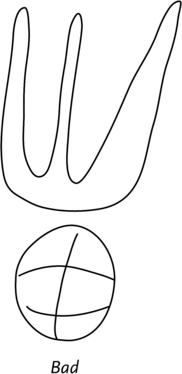Chapter 13 Left Ventricular Systolic Function Eric W. Nelson For some reason there is a lot of focus on the left ventricle and its evaluation on TEE, both in the operating room and on the boards. This most likely has to do with the fact that it’s pumping blood to the entire body, thus keeping you alive. The easiest way to start your evaluation of the left ventricle is to know what a normal left ventricle looks like. EF can be calculated by measuring the fractional area of change (FAC) of the left ventricle. A true long- or short-axis cross section is required being careful not to foreshorten. Foreshortening is a term commonly used by echocardiographers to describe the heart when it is compressed because of the viewpoint taken. With modern TEE machines all you have to do is outline the end-diastolic area and the end-systolic area and the machine will crunch the numbers. FAC = (end-diastolic area – end-systolic area)/end-diastolic area


Abnormal LV Systolic Function
 Ischemia, just can’t say it enough.
Ischemia, just can’t say it enough.
 Ventricle—infiltrative diseases that cause restrictive physiology such as amyloidosis cause global impairment.
Ventricle—infiltrative diseases that cause restrictive physiology such as amyloidosis cause global impairment.
 Pericardial space—tamponade either from an effusion or blood. TEE is great at not only making this diagnosis, but also locating where the effusion is around the heart and whether it is loculated.
Pericardial space—tamponade either from an effusion or blood. TEE is great at not only making this diagnosis, but also locating where the effusion is around the heart and whether it is loculated.
 Pleural space—tension pneumothorax causes decreased venous return thus decreasing preload and ventricular function.
Pleural space—tension pneumothorax causes decreased venous return thus decreasing preload and ventricular function.
 Metabolic—hypoxemia, hypoglycemia, anemia, hyperkalemia, and a vast array of other metabolic abnormalities.
Metabolic—hypoxemia, hypoglycemia, anemia, hyperkalemia, and a vast array of other metabolic abnormalities.
Left Ventricular Systolic Function



